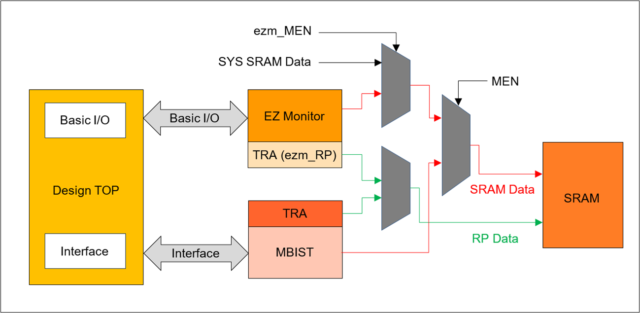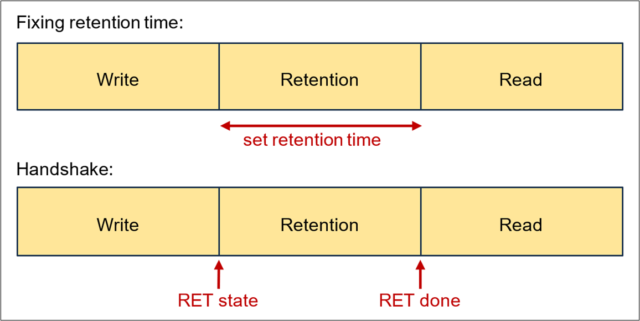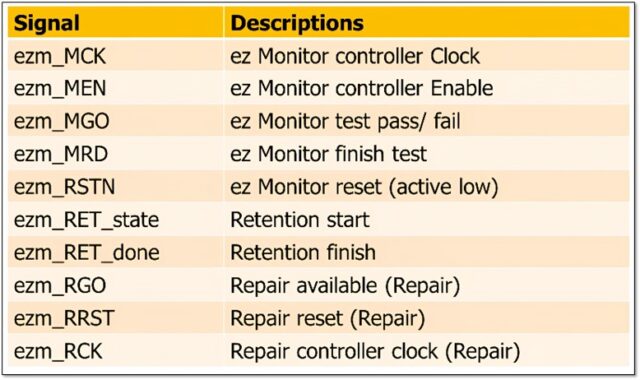It is crucial to ensure the accuracy of memory operation over long periods as safety specifications continue to evolve. EZ-Monitor is an IP designed for memory testing in the function mode. It supports Soft Repair and can coexist with existing MBIST (Memory Built-in Self-Test) circuits. This Soft Repair technology enhances chip resilience, and the compatibility of EZ-Monitor with MBIST circuits brings greater convenience and flexibility to applications.
EZ-Monitor Workflow
EZ-Monitor circuits can coexist with existing MBIST circuits, and be inserted beside the critical memory that need to be tested in the function mode, as shown in Figure 1. We can use multiplexers to switch the SRAM control signals, use ezm_MEN as the enable signal, and connect to the top through the Basic I/O interface. Note that the circuit insertion rule follows the clock domain.

Figure 1 The EZ-Monitor Workflow
EZ-Monitor Algorithms
EZ-Monitor adopts the retention test algorithm, which inserts a retention state between the read and write operations. EZ-Monitor supports two methods. The first one involves a fixed retention time. The retention time is pre-programmed into the circuit, resulting in a constant retention time for all tests. The second method uses a handshake mechanism. Through an interface, EZ-Monitor sends out RET state signals and enter the retention period after finishing the write operation of the memory testing data. When users are ready to end the retention period, the interface sends out an RET done signal and initiates the read operation, as shown in Figure 2.

Figure 2 EZ-Monitor Algorithms
EZ-Monitor Waveforms
The fixed retention time waveform is shown in Figure 3.

Figure 3 The Fixed Retention Time Waveform
The handshake waveform is shown in Figure 4.
Figure 4 The Handshake Waveform
Firstly, execute the normal test driven by the input signal, ezm_RP_default_MEN_D, including two background data (0F/5A). After memory faults are detected and the repair data is provided, the repair and re-test actions are performed.
Figure 4 & 5 shows the retention handshake waveforms with Soft Repair.

Figure 5 The Waveform of EZ-Monitor Interface (1)

Figure 6 The Waveform of EZ-Monitor Interface (2)
EZ-Monitor Interface
EZ-Monitor supports the Basic I/O interface. The ezm_MEN signal serves as the enable signal for the circuit, while ezm_RET_done functions as the control signal for the handshake mechanism. The ezm_MGO signal provides the result of the memory test, and finally, ezm_RGO determines whether memory repair can be performed, as shown in Figure 7.

Figure 7 EZ-Monitor Interface
